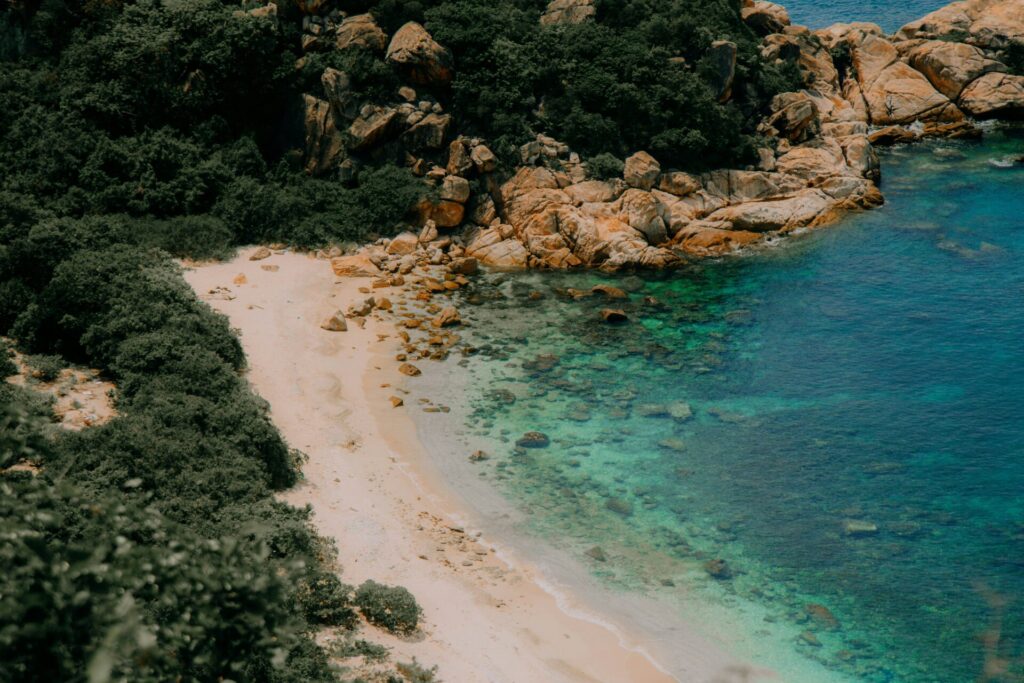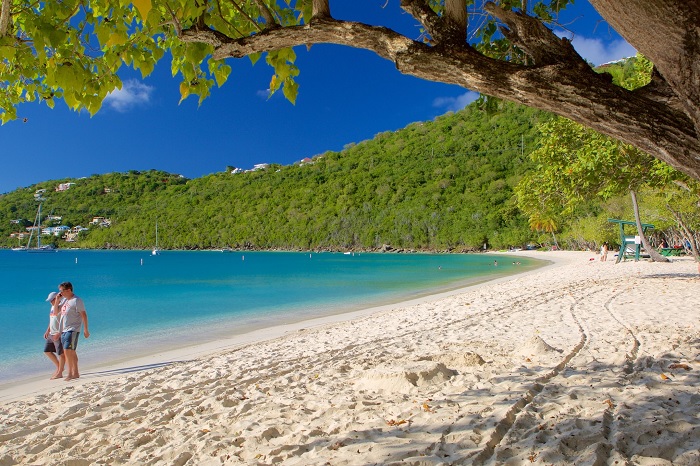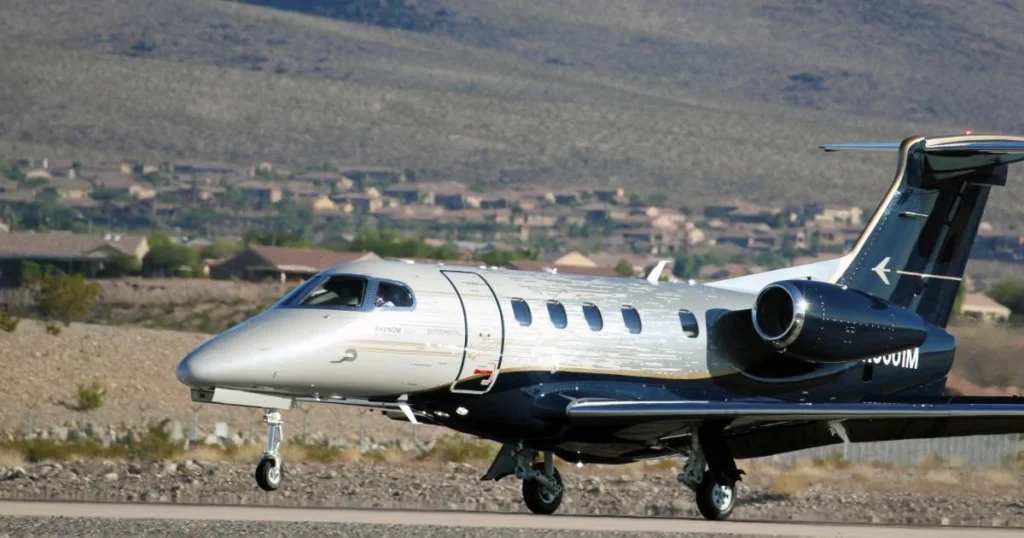Call us +84 396 919 611
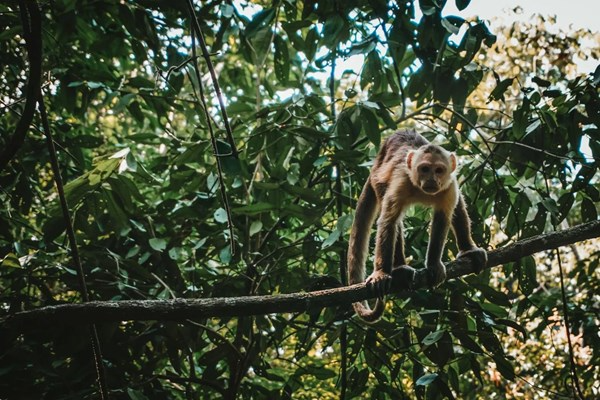
We came to Con Dao in the last days of April with a calm sea and beautiful sunshine. This is the ideal time for every tourist to enjoy all the «specialties» that Mother Nature bestows on Con Dao. This archipelago is likened to a green «lung» in the middle of the vast sea, protecting Mother Earth, and is also a place to preserve thousands of creatures and animals.
The awareness of preserving plants and animals in the island district is deeply imprinted in the flesh and blood of every Con Dao person. Preserving forests and seas helps them live a more fulfilling life in this place known as a paradise resort.

As scheduled, we were present at Con Dao National Park right after an over-4-hour cruise from Vung Tau city to Ben Dam Bay (Con Dao district). The first thing when we came here was that we had to let the flycam «ride the wind» to transmit the most comprehensive images of the park and the entire Con Dao. Thanks to the unmanned equipment, we were able to see in all four directions from above that everywhere was a vast forest.
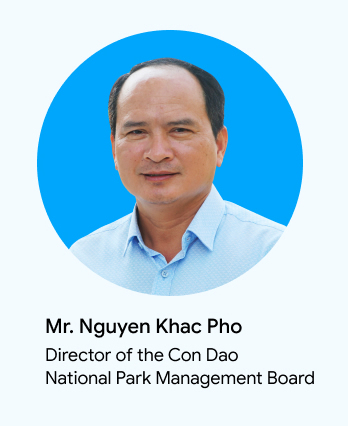
Con Dao National Park includes 14 islands located entirely in the Con Dao archipelago (in Ba Ria-Vung Tau province), with 16 large and small islands. Of these, the largest island is Con Son, with mountainous terrain dominated by arch granite ranges, protecting the island’s bays on both sides from strong winds.
According to Mr. Nguyen Khac Pho, Director of the Con Dao National Park Management Board, the park has an area of 19,990.7 hectares. Of which, 5,990.7 hectares are the forest conservation component. This is one of Vietnam’s national parks that conducts both forest conservation and marine conservation. It is the geographic isolation that is the factor creating the diversity of ecosystems, richness of species composition, and high endemism in Con Dao.
On June 18, 2013, Con Dao National Park was recognized by the Ramsar Convention Secretariat as one of 2,203 internationally important wetlands. Therefore, Con Dao National Park is the 6th Ramsar site and the first marine-island Ramsar site in Vietnam.
According to regulations, to be recognized as a Ramsar site, Con Dao National Park must meet at least one of the nine criteria prescribed by the Ramsar Convention. However, Con Dao National Park is «more than capable» of meeting the criteria.

Recently, the Ba Ria-Vung Tau Provincial People’s Committee approved a project on eco-tourism, resorts, and entertainment in Con Dao National Park in the 2021–2030 period, creating a legal basis to attract investment and serving as a resource for building and developing Con Dao’s tourism industry in a sustainable direction.
Mr. Le Van Phong, Chairman of the Con Dao District People’s Committee, also affirmed that the economic and tourism development of the island district must be associated with conservation work. All orientations and plans implemented in Con Dao must be associated with the conservation of forests, fauna, and flora.
«Con Dao does not disrupt the environment and uses the environment to develop high-quality tourism. The project on circular economy associated with conservation is very large, including investing in the National Park related to small islands, preserving coral reefs, and creating tourism exploitation products,» said the Chairman of the Con Dao District People’s Committee.
It can be said that the species composition of the Con Dao coral reef system is among the first and second most abundant and diverse in Vietnam. The seagrass ecosystem plays an important role in Con Dao, with scattered distribution in many areas but being most concentrated in the Southeast Bay. As of now, there are 11 seagrass species recorded in Con Dao.
The mangrove forest ecosystem is also mainly distributed in Dam Tre, Dam Quoc, and Dam The Bays, Bo Dap Beach, and Duong Beach of Bay Canh Island. There are 46 plant species distributed in the Con Dao mangrove forest, including 28 main mangrove species belonging to 14 families and 18 species participating in mangrove forests belonging to 13 families.

Up to now, Con Dao National Park has identified 67 endangered, precious, and rare species in the Con Dao marine conservation component that are under threat. Con Dao is known as the place with the highest number of mother turtles coming to the beach to lay eggs in Vietnam. This is one of the attractions for domestic and international tourists to visit and explore. This activity brings revenue from tourism and tourism services to the island district’s people.
Con Dao National Park is an important habitat for aquatic species and a migration route through which aquatic species can proliferate in wetlands or elsewhere, depending on specific conditions. During the breeding season, many offshore fish species, such as mackerel and garfish, go to coral reefs and seagrass beds to lay eggs. Molluscs, such as squid species, and crustaceans, such as lobster and crab, also spawn on coral reefs around Con Dao.
We have had the opportunity to visit many national parks and Ramsar sites in Vietnam, but there is hardly any place where the vegetation is as diverse as in Con Dao. Therefore, the World Bank added Con Dao National Park to the list of highest priority areas in the global system of marine protected areas.
During many days of studying at Con Dao National Park with many different routes and trips, it was clearly seen that Con Dao has typical characteristics of a tropical forest and island ecosystem expressed through forest habitats, which are evergreen broadleaf forests, semi-deciduous broadleaf forests, bamboo forests, and coastal mangrove forests.
The richness of forest habitats here is a favorable condition for forest animals and wildlife to reside, live, and develop. It has value and significance in terms of preserving natural landscapes, preserving forests and wildlife living in forests, contributing to the development of eco-tourism, and promoting the multi-use values of Con Dao forests.
Mr. Le Hong Son, Head of the Conservation and International Cooperation Department, said that to date, Con Dao has recorded 1,077 plant species belonging to 640 genera of 160 higher plant families. Research on terrestrial vertebrates has recorded that in Con Dao National Park, there are 155 species belonging to 64 families and 26 orders, including 25 species of mammals, 85 species of birds, 32 species of reptiles, and 13 species of amphibians.
Con Dao Sea has three main ecosystems: the mangrove forest ecosystem with an area of 18 hectares, the seagrass ecosystem with an area of about 200 hectares, and the coral reef ecosystem with an area of about 1,000 hectares.
«The marine biota has recorded 1,493 species, including 23 species of mangrove plants, 127 species of seaweed, 11 species of seagrass, 157 species of phytoplankton, 115 species of zooplankton, 342 species of coral, 202 species of coral reef fish, 116 species of crustaceans, etc. Among these, 44 species are extremely rare genetic resources of Vietnam’s sea and have been included in the Red Book,» Mr. Son said.


For a long time, Con Dao has been known as the «kingdom» of many bird species in the middle of the sea. Not only are there endemic birds, but Con Dao has surprisingly beautiful birds, and just hearing their names makes us think a lot and want to search, explore, and understand more.
That is the Brown Booby species (whose scientific name is Sula leucogaster). I asked Mr. Nguyen Phung Hoang (Con Dao National Park Forest Protection Department): «Is the Brown Booby crazy as rumored?». Immediately, the rangers in the group burst out laughing. I am not the first to ask this question. On the contrary, it is a question that is asked quite a lot. But every time, it makes the rangers laugh like that.
Mr. Hoang explained: «I do not know who gave this bird species such a cute name, but actually, this bird species is not as crazy as its name. Maybe it comes from French: fou means crazy. But it must be said that they have many confusing actions, such as spitting at other bird species or humans. They also have a habit of perching on the ship’s sides and are easy to catch for food.» They are quite gentle on shore but are real killers when hunting; they dive into the water at high speed and pursue their prey underwater.

In Vietnam, during the breeding season, the Brown Booby gather on Hon Trung (Con Dao) to lay eggs. We will easily see them flying around Hon Trung with wide wings and large bodies among thousands of other birds.
To see and learn about the bird species in Con Dao National Park, it is compulsory to visit Hon Trung. This is known as the largest bird colony in the middle of the sea in Southeast Asia, and it is strictly protected. This place gathers more than 80 different bird species, with more than 5,000 individual birds living and nesting to lay eggs.
After many times of asking for permission, we were able to go to Hon Trung to admire the «bird island nation.» Apart from professional forces, almost no people are allowed to access this bird colony to avoid affecting the birds’ psychology and conservation work. From a distance, this «bird island» looks like a giant egg in the middle of the sea, plus it has been covered with bird droppings for a long time, creating a white color.
From far away, as if sensing our impending arrival, thousands of birds flew around, chirped, sang, etc., resounding in the sky like a vivid painting with many timbres of a symphony.
The Hon Trung «bird island» is uninhabited, so it still retains many wild features, and conservation work is therefore more intact. Each pair of swallows flew around, chasing each other across the water surface and flocking here to nest. They are also the most numerous species in Hon Trung. It is because of its noise, fierceness, and overwhelming numbers that the swallow species dominates this island.

While engrossed, Mr. Nguyen Tien Van Phai (Department of Ecotourism and Environmental Education, Con Dao National Park) patted my shoulder and pointed to a small, milky white bird spreading its wings. That is the Pied Imperial Pigeon species. Its beauty is gentle to the point of meekness. It is named like that because its distinctive creamy white feathers cover most of its body, and it only roars like a whisper amidst the countless sounds of the bird island and the ocean.
The Pied Imperial Pigeon (scientific name: Ducula bicolor) belongs to the Columbidae family and is one of the rare and uniquely beautiful birds in Vietnam. It is often found mainly on Hon Tre Nho, Hon Tai, and the remaining islands of the Con Dao archipelago.
With a diverse natural environment and natural spaces less affected by humans, Con Dao has become an ideal living place for the Pied Imperial Pigeon. Here, they look for food in the primitive forest and live in the diverse tropical forest environment, which provides sufficient food sources and safe shelter.
We were not allowed to stay long on Hon Trung to avoid affecting the seabird flock. We regret it, but we have to comply. It is these regulations that have helped bird species here to be preserved and grow well over the years.
Many of these bird species are considered rare and are facing many threats. Bird habitats are affected by urbanization, quarrying, and fishing activities.
Sitting on the canoe, I forever regretted the truly special bird society on this remote island. Mr. Phai redirected me to another enchanting bird species. It is a bird species that is considered a «treasure» when coming to Con Dao. I asked, «Is it the Nicobar pigeon?». This guy suddenly asked me why I knew. I just smiled and was happy because I was about to meet the «beauty queen» of the bird world in Con Dao.
The Nicobar pigeon is a bird species found on small islands and beaches in the Nicobar, Malay, Solomon, and Palau archipelagoes. This species was also recorded to appear in Con Dao at the end of 2022 and is unique in Vietnam.

By the end of July 2023, the «fever» of hunting for photos of Nicobar pigeons in Con Dao had also been initiated. For the first time, sharp images of an extraordinarily beautiful Nicobar pigeon have been introduced. This is also what prompted us to go to Con Dao and admire this bird.
Coming to Con Dao without crossing the sea or passing through the forest to directly admire this bird species is a bit of a waste. Before me, many people also asked for permission to «hunt» the photos of this bird. Of course, some people succeed, and many people also leave empty-handed. But never mind; let’s give it a try. I tried to convince the Park Management Board, and they agreed.
According to the experience of many photographers and forest rangers, the area where Nicobar pigeons are most easily encountered is on the large Hon Tre island.
After passing through the forest for about 30 minutes, Mr. Phai told us to «ambush» at a place where we could most easily see Nicobar pigeons. While waiting for another 45 minutes, we were both hungry and «welcomed» by wild mosquitoes. When I was sleepy after the trip through the forest, Mr. Phai patted my shoulder and said, «There are Nicobar pigeons.» I woke up and looked in the direction Phai pointed. Nicobar pigeons perched more than 50 meters away, hidden behind foliage. There is no greater happiness; we are immediately fascinated by them.
Just as we were about to take the first photo, they flew away, leaving us bewildered and regretful. However, that is more than enough for travelers and admirers.
Con Dao National Park is currently strengthening protection, monitoring, research, and dissemination so that people jointly protect this rare and beautiful bird species with technological equipment such as camera traps, flycams, and surveillance cameras and strengthening patrols and inspections by forest rangers.


Con Dao is entering the peak season of turtles laying eggs and releasing baby turtles back to the sea. This is also the conservation activity that attracts the most tourists each year. Staying up all night to watch turtles come ashore to lay eggs and release baby turtles back to the sea will be an unforgettable experience for many people.
Since 1987, Con Dao National Park has begun implementing sea turtle conservation activities, with many specific activities. Of which, measures such as trespassing, harassing mother turtles, and exploiting turtle eggs are fiercely controlled by forest rangers. Instead, Con Dao National Park relocated turtle eggs to incubation lakes, rescued baby turtles, and organized ecotourism activities.
Con Dao National Park is assessed as the first place in Vietnam to successfully implement Vietnam’s sea turtle conservation program and is recognized by the Vietnam Book of Records as the place where the most baby turtles are released back into the sea. Con Dao National Park is the 11th member of the Indian Ocean-Southeast Asia (IOSEA) Sea Turtle Conservation Network.
The survival rate of baby turtles is only about 1/1,000, so sea turtles are included in the Vietnam Red Book as well as the World Red Book to preserve them against the risk of extinction. Regarding sea turtle conservation, for many years, Con Dao National Park has implemented a program to tag and monitor turtles during the breeding season and a program to relocate and incubate turtle eggs.

According to Mr. Nguyen Thai Hau, Deputy Head of the Con Dao Forest Forest Protection Department, Con Dao waters are the egg-laying habitat of two species of sea turtles that are at risk of global extinction, namely Green Turtle (Chelonia mydas) and Hawksbill Turtle (Eretmochelys imbricata). Every year, from April to November, about 350 mother turtle individuals go to the beach to lay over 1,000 nests of eggs. The number of baby turtles released into the sea is over 100,000 individuals/year.
«From 1993 to 2022, Con Dao National Park has recorded 12,654 mother turtle individuals coming to the beach to lay eggs, with nearly 37,000 turtle nests relocated to the incubation lake. The total number of eggs is more than 3.2 million, hatched and released into the sea by more than 2.4 million baby turtle individuals. The number of sea turtles coming to nest and breed is the largest in the country, with about 700 heads/ year,» Mr. Hau provided information.
Con Dao is not only a «laying ground» for individual turtles in the East Sea area, near the shore, but also attracts «turtle mothers» from abroad. Recently, a green turtle individual from Malaysia traveled thousands of nautical miles to Con Dao National Park to lay 108 eggs. This green turtle weighs 90–100 kg and is about 40 years old. On June 9, the baby turtles were successfully hatched and released by forest rangers and tourists into the ocean.
Previously, the Bay Canh Ranger Station under Con Dao National Park also discovered many mother turtles with tags from other countries in Southeast Asia coming here to lay eggs.
Currently, Con Dao has 16 turtle egg-laying grounds, such as Bay Canh, Ben Dam, Hon Tai, Hon Tre Lon, Hon Cau, and Bai Duong. Among these, Hon Bay Canh is a priority choice for «turtle mothers,» with 70% of sea turtles coming here to lay their eggs. From April to November every year is the breeding season for sea turtles, but the peak time for turtles to lay eggs is from May to September.
«At this time, there are over 600 mother turtles going to the sand beaches of Con Dao National Park to nest and lay eggs. With over 150,000 baby turtles rescued and released back to the sea, the successful egg hatching rate is 87%. During the peak season, some beaches on Hon Bay Canh and Hon Tre Lon recorded 20 mother turtles nesting each night,» added the Deputy Head of the Con Dao Forest Protection Department.

Con Dao National Park also plays a supporting role for sea cows (Dugong dugon, belonging to the Dugongidae family), a marine mammal listed in the Vietnam Red Book, the IUCN Red Book, and the CITES Convention as in danger of extinction worldwide.
Con Dao is one of two areas where sea cows appear and look for food in Vietnam. Mr. Le Hong Son, Head of the Department of Conservation and International Cooperation, said that Con Dao waters have about 10–12 Dugong individuals. Sea cows often forage on seagrass beds in Con Son Bay and Tau Be – Dat Doc Cape.
Sea cows are mammals that eat seagrass. Each animal is about 4 m long, weighs up to 300 kg, and can live up to 70 years.
The conservation of sea cows in Con Dao is also strictly implemented and given top priority. If sea turtles can be easily admired, sea cows are the opposite. It is very difficult to see them in Con Dao. Even Mr. Nguyen Van Vung, with about 20 years of experience working at the park and spending more time diving than on shore, rarely encounters sea cows.
In September 2019, some local fishermen regularly discovered Dugong appearing in the Bai Nhat area of Ben Dam Bay in numbers of 1-2 individuals. In particular, there was a time when a herd of about 5–6 individuals appeared (the smallest one was about 20 kg; the largest was about 200 kg).
«In Con Dao waters, there are still about 12 sea cow individuals appearing and feeding on seagrass beds in Con Son Bay, Hon Bay Canh, Bai Nhat, Ben Dam Port, Dam Trau, and Ca Map Cape. However, the frequency of their appearance in recent years has been very low,» Mr. Vung said.
June and September are the times when it is easy to see sea cows looking for food. They are most active at high tide.
For many years, to improve the conservation and sustainable management of the sea cow herd, Con Dao National Park has synchronized many measures to protect the living environment, such as controlling recreational fishing, minimizing boat activities, and planting, restoring, and translocating seagrass species in Con Dao. At the same time, the park also established a sea cow rescue center and used communication, education, and public awareness tools to protect this endangered animal species.


In early June, a ranger from the Con Dao Forest Protection Department informed us: «Corals are dying and bleaching all over Con Dao.» Before we could ask anything, he quickly turned off the phone. Later, this guy sent me many videos and pictures of the mass bleaching of coral reefs. White! What a pity!
I immediately called Mr. Vung and Mr. Thanh from the Park Management Board to ask for more information about the situation of the coral reefs. The cause was determined to be due to the El Nino episode in April–May, which caused seawater at the bottom to warm up.
Popular coral varieties such as Acropora, Porites, Montipora, Pachyseris, Pavona, Echinopora, Echinophyllia, Pectinia, Fungia, and Ctenactis are all bleached. In addition, during the survey, the presence of crown-of-thorns starfish was recorded in the Hon Cau, Hon Tai, and Ong Cuong sea areas. At the same time, it was also discovered that some had also lost their natural color due to the impact of high seawater temperatures in recent days.
«Normally, the ideal living temperature for coral ranges from 24 oC to 30 oC. However, during the recent peak period of hot sun, the bottom water temperature of Con Dao waters was up to 32 oC. This temperature has been maintained for a long time, causing the coral to be bleached as above,» said Mr. Nguyen Van Vung.

In Vietnamese waters in general and Con Dao waters in particular, the phenomenon of coral bleaching has been recorded in the years 1998, 2000, 2002, 2010, 2016, and 2019. This proves that in the Southern waters of Vietnam in the past 20 years, the phenomenon of coral bleaching has occurred more frequently and with greater frequency.
Currently, at the headquarters of the Con Dao National Park Management Board, specimens of two dead sea cow individuals are being displayed for scientific research and environmental education. One of them was an individual recorded dead in September 2020 in Con Son Bay. The dead sea cow was female, with a weight of about 120 kg, a length of 195 cm, and a waist circumference of 130 cm.
«Through displaying these two sea cow specimens, we hope to help raise public awareness of the conservation of this rare, precious, and endangered mammal. For its part, the Con Dao National Park Management Board also makes many efforts to protect and research to determine the distribution areas of seagrass and sea cows,» said Mr. Le Hong Son, Head of Conservation and International Cooperation Department.
In Vietnam, Con Dao National Park is assessed as one of the most effective units for maintaining biodiversity conservation. Despite successes, few people know that the professional force here always faces many challenges and difficulties.

Sea turtle conservation is implemented very effectively in Con Dao, with over 100,000 baby turtles released into the sea each year. However, in Con Dao, sea turtles also face many threats from nature and humans.
According to statistical data from January 1, 2020, to May 20, 2020, there were 18 sea turtle individuals that died due to many different causes. Among these, four individuals were killed to obtain meat and eggs, but the violators could not be detected or handled. Three individuals died due to being caught in nets and colliding with canoes, and 11 individuals died of unknown causes.
In recent times, Con Dao National Park rangers have coordinated with functional agencies to criminally prosecute many violations related to illegally hunting, transporting, and trading turtle eggs and turtle meat. Violators have been strictly handled by the functional agencies. However, because of greed for profit, many people still ignore and continue to break the law. Recently, the Con Dao district court sentenced four people for buying and selling sea turtle eggs, with a total penalty of 24 months in prison and more than VND 1 billion.

In recent years, ocean waste caused by fishing activities and broken nets and fishing tools that have been thrown away or fallen into the sea has caused sea turtles to become entangled in nets and die, and at the same time, it has also polluted the breeding grounds of sea turtles. Coral reefs are also not outside the influence of these impacts.
This is also a painful issue, and Mr. Le Van Phong, Chairman of the Con Dao District People’s Committee, recommends that functional sectors and agencies jointly get involved. This not only affects the environment and impacts tourism development activities in Con Dao, but the flora and fauna here are also seriously affected.
Recently, an olive ridle turtle caught in ocean waste, which is a fishing net, was successfully rescued by foreign tourists. If not discovered in time, it is likely that this individual will be trapped to death, like many other unfortunate individuals recorded previously.
Conservation work is not just for any unit or locality but requires the involvement and determination of the entire community. Con Dao National Park will forever be green only when each person’s awareness of conservation is truly effective and considers it a priceless gift for future generations.
PRIVATE JET CHARTER TO CON DAO
JetVina is a Vietnam Air Charter company, the company holds exclusive access to a diverse fleet of aircrafts based in Vietnam and Singapore which enables JetVina to provide private jet charter flights at the best prices.
Con Dao is one of the best choice of many JetVina’s clients who looking for Vietnamese rustic luxury destinations, since inception JetVina has carried hundreds of private jet charter flights to Con Dao from Vietnam major cities such as Hanoi, Ho Chi Minh, Danang, Hai Phong and Asia such as Singapore and Bangkok, Siam Reap, Phnom Penh, Laos, Hong Kong, Macau, China mainland….
To book private jet charter flight to Vietnam and Con Dao (Con Son airport) please contact us via WhatsApp or telephone at +84 396 919 611, or email flights@jetvina.com for the best private jet flight prices.
- ORDER Без категории, Stories
Memberships
Experience
- Hotel & Villa
- Yacht
- Fast Track
- Flight Permits
Legal
Contact Us
- Request a quote
- +84 396 919 611
- flights@jetvina.com
- Phu Quoc: 04 Hoa Tra, Meyhome Capital
-
Hanoi: No 04, LK111, Cong Dong, La Khe, Ha Dong
- Careers

Memberships
Experience
- Hotel & Villa
- Yacht
- Fast Track
- Flight Permits
Legal
Contact Us
- Request a quote
- +84 396 919 611
- flights@jetvina.com
-
Hanoi: The Terra - An Hưng, V3 Nguyen Thanh Binh, Ha Dong
- Phu Quoc: 04 Hoa Tra, Meyhome Capital
- Careers

